Network pharmacology of threatened abortion treated by ShouTaiWan
Yong-Shi Yang, Min Xu
1. The Second Clinical School of Guangzhou University of Chinese Medicine, Guangzhou 510405, China
2. Guangdong Provincial Hospital of Chinese Medicine, Guangzhou 510120, China
Keywords:
ABSTRACT
1. Introduction
Threatened abortion (TA) refers to a small amount of vaginal bleeding before 28 weeks of pregnancy, often with dark red or bloody leucorrhea, accompanied or not accompanied by paroxysmal abdominal pain or low back pain, no gestational material discharge, cervical opening is not open, the membrane is not broken, the size of the uterus corresponds to the number of weeks of menopause [1].TA is a common pregnancy complication and the incidence rate of this complication is about 20% in clinical pregnancy, finally about 50% of women with the disease eventually have miscarriage [2].There are various factors related to the incidence of spontaneous abortion, such as genes, chromosomes, hormone levels, immunology, infection, psychological factors and so on [3].At present, the main treatment for threatened abortion is progesterone drugs, to improve endometrial receptivity, to maintain pregnancy inhibition abortion [4].Although progesterone and progestational agents have been used for the treatment of threatened abortion for decades, a large number of studies have yet to provide strong evidence to support their use and to determine their correlation with pregnancy outcomes [5].
The disease name of threatened abortion is not find in ancient books of traditional Chinese medicine, but according to the symptoms can be attributed to the category of "fetal leakage", "fetal restless", its etiology and pathogenesis is mainly unconsolidation of Chong and Conception Channels.According to the syndrome type,it can be divided into kidney deficiency, qi and blood weakness, blood stasis, blood heat , etc.And kidney deficiency is the main type."Zhu Bing Yuan Hou Lun" said: "the fetal leakage is that appear a small amount of vaginal bleeding when pregnancya few months , that is because Chong and Conception Channels are deficiency so as to uncontrol the blood from TaiYang Channel and ShaoYin Channel." Thus it pointe out that the fetal leakage is related to unconsolidation of Chong and Conception Channels. "Nv Ke Jing Lun "said: "Consolidating the fetus depends on the mother's kidneys,which is mother's ture Qi.If mother's kidney deficiency, the fetus will be unconsolidation."Therefore, the treatment of traditional Chinese medicine should be firstly replenishing kidney essence.
ShouTaiWan from the qing dynasty zhang xichun in the "YI Xue Zhong Zhong Can Xi Lu", has been the classic formula for the treatment of threatened abortion.Tusizi has the function to coordinating yin and yang, strengthening and nourishing marrow and essence, which is the best herb to nourish the kidney and calm the fetus.Sanjisheng and Xuduan both can nourishing liver and kidney,coordinating Chong and Conception Vessels for preventing miscarriage.Ejiao,as flesh and blood products,it nourishing yin and supplementing blood to Anti abortion.All of them were used together to play the role of tonifying kidney and fixing fetus.Niu yuanyuan[6] et al., the effective rate of treating 60 patients of threatened abortion with kidney deficiency by adding or subtracting ShouTaiWan was as high as 90.0%, which could significantly improve the patients' abdominal pain, vaginal bleeding and other clinical symptoms.In recent years, studies have found that ShouTaiWan have estrogenlike effects, which can inhibit uterine smooth muscle contraction and play a role in preventing and treating abortion.Therefore, it can be speculated that it may regulate early embryo implantation by regulating the expression of related proteins and cytokines, so as to maintain pregnancy.However, due to the particularity of the patient population, no specific key targets and pathways have been found.In addition, the complex composition of TCM compound is also a key factor restricting the systematic study of its pharmacodynamic composition and mechanism of action.Network pharmacology is an advanced discipline to understand and study the mechanism of drug action from a new perspective on the basis of high-throughput data analysis and computer virtual calculation [8].Therefore, this study, by means of network pharmacology, explored the potential pharmacodynamic components and molecular mechanism of ShouTaiWan in the treatment of TA, and provided scientific basis for further research.
2. Materials and methods
2.1 Compound composition and target of ShouTaiWan
Based on the traditional Chinese medicine systematic pharmacology database (TCMSP) and BATMAN-TCM database , the chemical constituents of Tusizi, Xuduan, Sanjisheng and Ejiao in ShouTaiWan were retrieved, and the chemical constituents database was established.Among them,Tusizi, Xuduan, Sanjisheng were retrieved in TCMSP, and Ejiao was retrieved by BATMANTCM database.All chemical components were searched and 109 compounds were obtained, among which 29 were Tusizi, 31 were Xuduan, 46 were Sanjisheng and 3 were Ejiao.According to the oral bioavailability (OB) ≥30%, drug-likeness(DL)≥0.18 [9] for screening conditions on the chemicals in the life of ShouTaiWan by line filter, we obtained qualified candidate active compounds, including 12 of Tusizi, 8 of Xuduan,2 of Sanjisheng, 3 of Ejiao.Finally we got 21 compounds after deleting the repeat candidate compounds.The selected candidate compounds were input into TCMSP to identify the corresponding targets of the compounds, and the genetic targets of ShouTaiWan were finally obtained by using Perl language and Uniprot database.
2.2 Collection of TA targets and prediction of drug action targets
According to GeneCards database, we searched disease keywords with threatened abortion and got the target genes, and used R language program model, so as to obtain common target genes.There were 89 common target genes from TA and ShouTaiWan, at the same time making Wayne figure.
2.3 Construct the network diagram of "disease - drug - target" interaction
Cytoscape3.7.2 software was used to construct the "disease-drugtarget" interaction network of ShouTaiWan obtained from the active components and the target genes shared with TA.
2.4 Construction and analysis of key target PPI network
In order to further illustrate the effect of target proteins at the system level, we inputted 89 compounds targets - disease common targets in STRING 11.0 database, selecting minimum require interaction score > 0.4 protein interaction network (PPI), setting the free point hidden at the same time, and downloaded the PPI network graphics and save TSV file, then core genes of PPI were screened by R language.
2.5 GO functional enrichment analysis and KEGG pathway enrichment analysis
Firstly, the target obtained above was transformed into ID, and the R language was used to convert the common target of ShouTaiWan and TA into entrez ID, so as to prepare for the next analysis.Then installed a biometric package, such as bioconductor, in the R language for data processing.Then the histogram, bubble graph, pathway graph and data containing P value for GO and KEGG enrichment analysis were obtained through R language.Finally, Perl was used to transform the transformed entrez ID into the original genetic target.
3. Result
3.1 Prediction of drug-disease targets
In this study, the screening thresholds of OB were all greater than or equal to 30% of Tusizi,Xuduan,Sanjisheng , and the threshold of DL was set as greater than or equal to 0.18.Ejiao was screened by BATMAN-TCM, and the thresholds were set as 20 and 0.05.Among all the 109 active compounds, the 21 active ingredients that met the conditions were screened out, as shown in table 1.In the DrugBank database, 21 active ingredient targets in ShouTaiWan were searched, and then gene targets related to TA diseases were retrieved from GeneCards database. Finally, 89 drug-disease co-action targets were obtained by using R language to make Wayne figure.
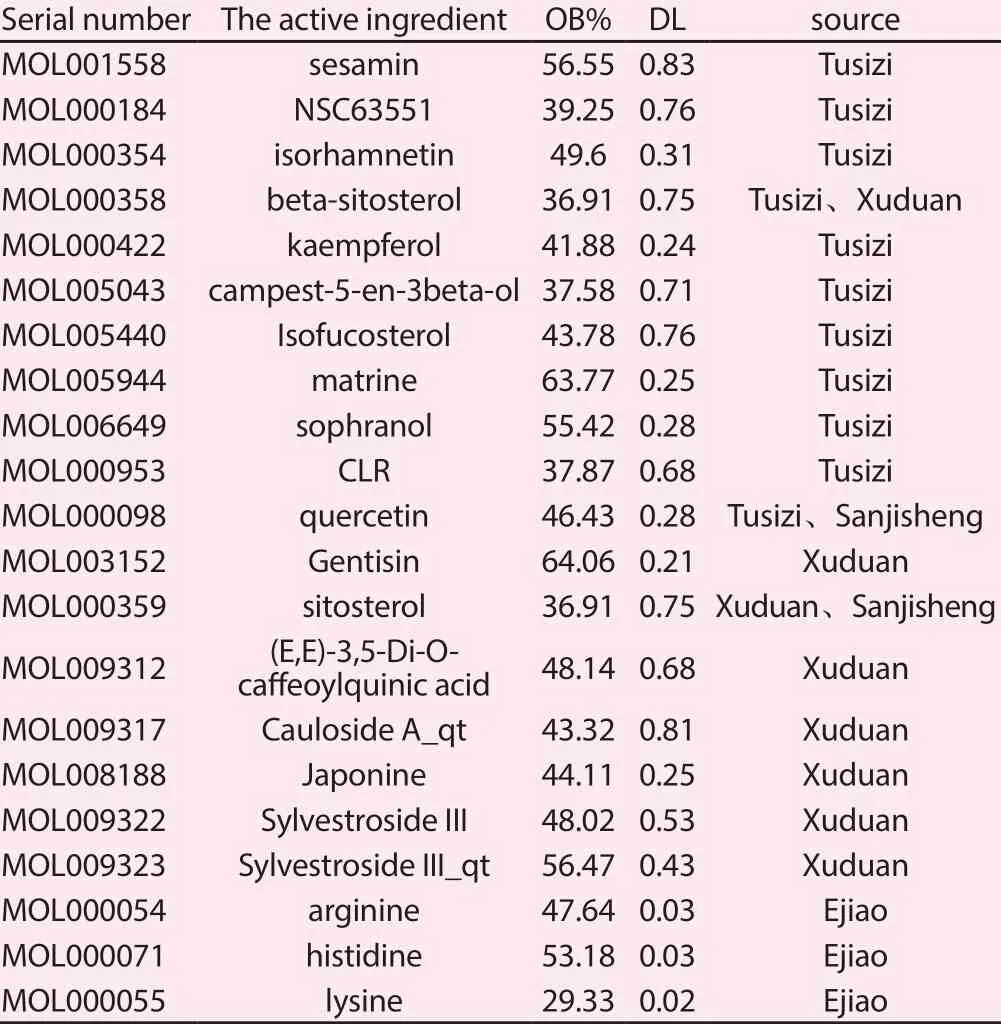
Tab.1 Basic information of active ingredients screened in ShouTaiWan
3.2 Network pharmacologic visualization
All the targets of TA were retrieved from GeneCards database, among which 89 potential targets were related to the treatment of TA with ShouTaiWan.Cytoscape3.7.2 was used to construct the "diseasedrug-target" interaction network between the active components of ShouTaiWan and the target genes common with TA (figure 1).In figure 1, the triangle node represents the active ingredient and the circular node represents the target gene.
Degree refers to the total number of routes connected with other nodes in the network. More higher the value is, the more important the corresponding compound or target is in the network.The Network Analyzer plug-in in Cytoscape software was used to analyze figure 1, showing that the compounds with the highest degree was quercetin (degree=79), the second was kaempferol (degree=28), the third was beta-sitosterol (degree=15) and the fourth was isorhamnetin (degree=13).Analysis from the Angle of targets, PTGS2(degree=10) have more multiple interacting ligands, followed by PGR (degree=8), PTGS1 (degree=7), PPARG (degree=6), which suggests that they play a central role in the network.And they are ShouTaiWan major effective compounds and targets for the treatment of TA.
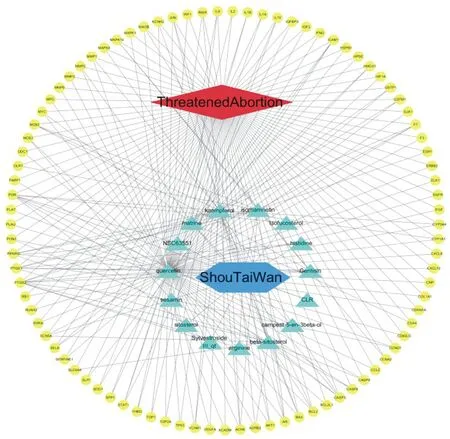
Fig.1 Network of disease-drug-target interactions between ShouTaiWan and threatened abortion
3.3 The construction of PPI and TA protein interaction network and its core gene
PPI was obtained by inputting the 89 common genes obtained by Wayne diagram into the STRING 11.0 database for analysis. as shown in figure 2, which contains 89 nodes, 226 edges, the average node degree value of 5.08, and P value is less than 1.0 e-16 PPI enrichment.Nodes represent proteins, and each edge represents the interaction between proteins. The more lines, the greater the correlation.The TSV files downloaded from STRING were processed in R language to obtain the core genes of PPI, such as IL-6, AKT1, VEGFA, etc.( figure 3)
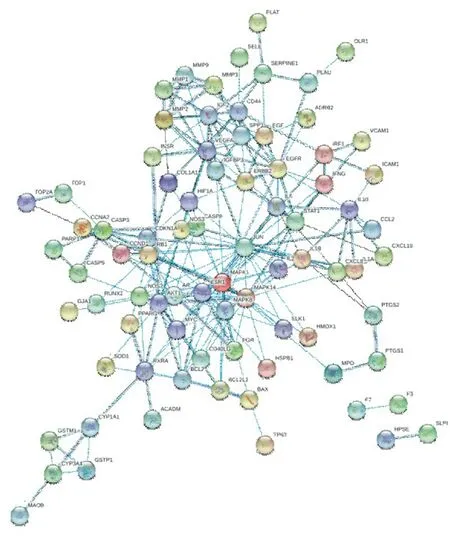
Fig.2 Analysis of target-target interaction by STRING
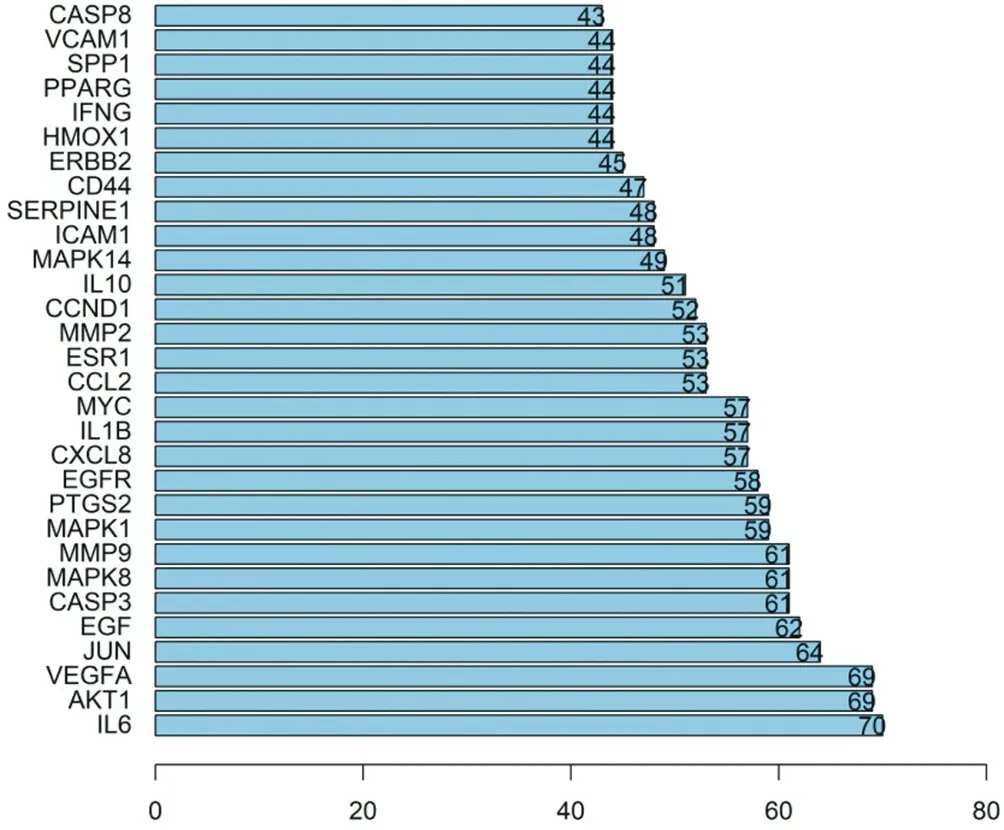
Fig.3 Core genes in PPI
3.4 GO functional enrichment analysis
After R language processing, a total of 110 functions were obtained. The bubble diagram enriched by GO function of the first 20 functions is shown in figure 4. The P value represents the significance of enrichment.The smaller corresponding P value is, the more the color is inclined to red, and conversely the color is inclined to blue.The abscissa is the number of enrichment, so it can be known that the most enrichment is 14 genes. After enrichment by GO function, the number of enrichment is large, such as the cytokine receptor binding, proximal promoter sequence-specific DNA binding, RNA polymerase proximal promoter sequence-specific DNA binding, chromatin binding, etc.
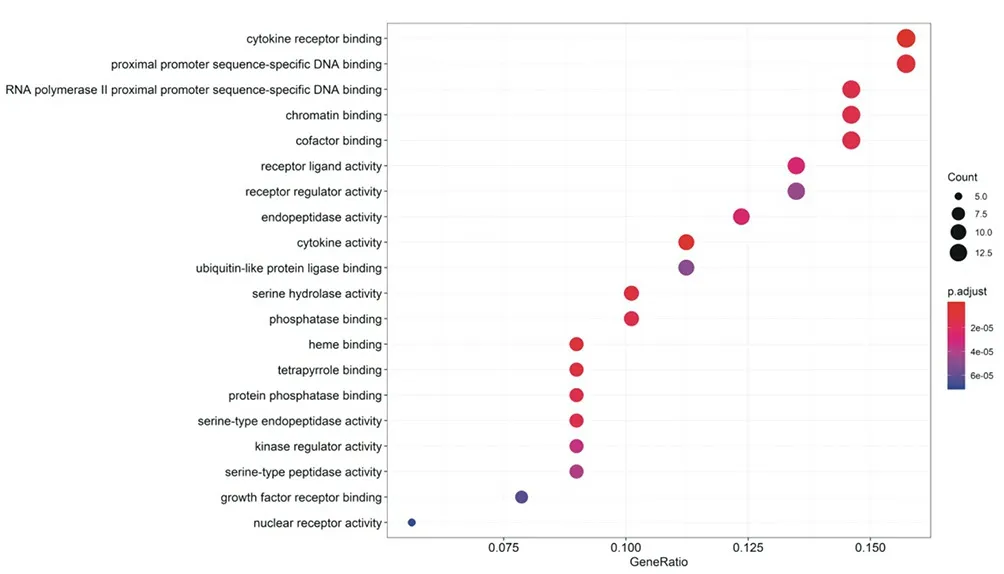
Fig.4 Gene ontology term of candidate targets of modified ShouTaiWan against Threatened Abortion
3.5 Enrichment analysis of KEGG pathway
The enrichment analysis of 89 common targets was carried out by using the R language program for KEGG pathway, and obtained 139 pathways, among which the top 20 pathways with significant results were shown in table 2.The prominent first 20 results were plotted into a histogram, as shown in figure 5. The abscissa represents the number of targets, the left represents the path name, and the color represents the P value.The smaller corresponding P value is, the more the color is inclined to red, and conversely the color is inclined to blue.The results showed that in addition to the significantly higher pathways such as AGE-RAGE signaling pathway in diabetic complications, Fluid shear stress and atherosclerosis, 20 more significant pathways such as TNF signaling pathway and Bladder cancer were obtained.It can be seen that TCM compounds regulate diseases through multi-target and multi-pathway so as to achieve the purpose of treatment.
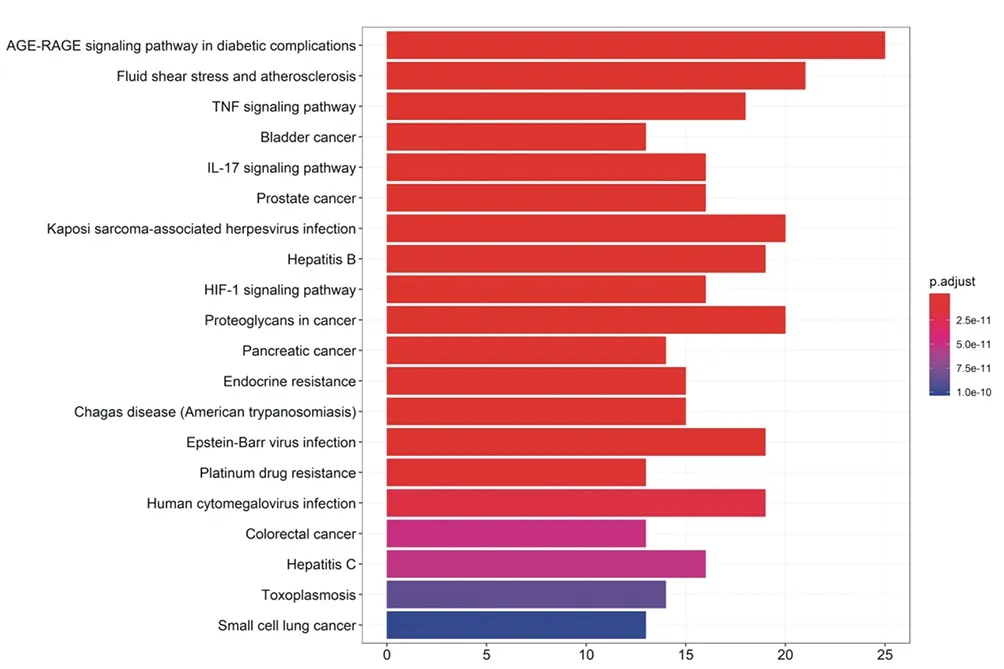
Fig.5 Modified ShouTaiWan and Threatened Abortion target genes KEGG pathway analysis
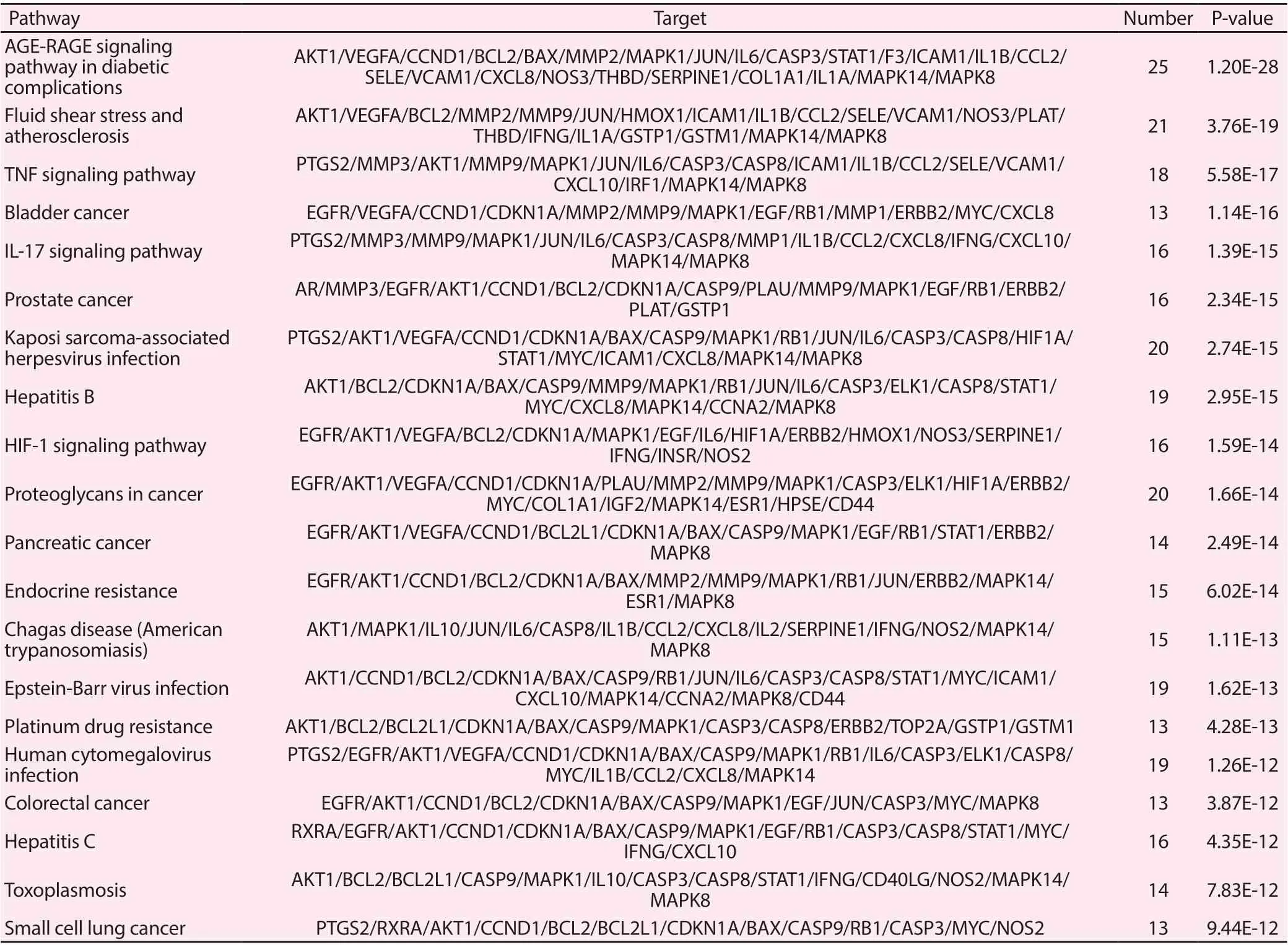
Tab.2 Information of protential targets and signaling pathways for constituents from modified modified ShouTaiWan
4. Discussion
ShouTaiWan, from ancient times to now by each doctor used for the treatment of fetal unrest, foetus leakage and other gestational diseases, its main function is replenishing kidney essence, coordinating Chong and Conception Vessels that is for preventing miscarriage.Modern medicine and pharmacology have shown [7][10] that ShouTaiWan have estrogen-like and progestin promoting effects, which can inhibit uterine smooth muscle contraction, improve and regulate the endocrine system, and play a role in preventing and treating abortion.Gao Jie [11] analyzed the changes of estrogen level in rats with kidney asthenic-luteal inhibition induced abortion model under the intervention of ShouTaiWan, and the results showed that ShouTaiWan could improve estrogen level and enhance luteal function to maintain pregnancy.In order to further study the molecular mechanism of ShouTaiWan in the treatment of threatened abortion, this study adopted TCMSP database,and BATMAN-TCM database to get the compound effective active ingredient of 4 herbs in ShouTaiWan (Tusizi,Xuduan,Sangjisheng,Ejiao) , and diseases in GeneCards database retrieval TA target, through mapping genes for common targets, at the same time using Cytoscape software build "disease - drug - targets" interaction network, that ShouTaiWan motivation mechanism for the further research in the future to lay the foundation.From the constructed "disease-medicine-target" interaction network, quercetin, kaempferol, beta-sitosterol and isorhamnetin, the core compounds with Degree far higher than other compounds, they all present in Tusizi, among which, beta-sitosterol also present in Xuduan and quercetin also present in Sanjisheng. Quercetin, kaempferol and isorhamnetin are all flavonoids.Quercetin [12] as a kind of widely exists in the nature of natural flavonoids, has now found that it has multiple biological activity, such as antioxidant, anti-viral, anti-inflammatory effects, in the cell and animal experiments can be used to treat diseases of the liver, heart, spleen, etc system.Kaempferol [13] has a variety of pharmacological effects such as anticancer, antioxidant, antiviral, anti-inflammatory, antibacterial, and immune enhancement.Beta-sitosterol[14] has a wide range of pharmacological effects including anti-inflammatory, antibacterial, analgesic and anti-tumor.Isorhamnetin[15] has a variety of cardiovascular and cerebrovascular protective effects, including endothelial protection, anti-atherosclerosis, anti-myocardial ischemia,etc,and has a variety of effects on inhibiting adipocyte differentiation, hypoglycemic, anti-hypoxia, anti-inflammatory, antiviral, etc. Throughout the four compounds all have antioxidant, antibacterial, anti-inflammatory and enhance the body's immunity.PTGS2 was the most moderate targets,then were PGR, PTGS1 and PPARG.Studies have found that [16]PTGS2 is involved in the maternal-embryo exchange signaling pathway of early embryo implantation,and is one of the important up-regulated genes in early pregnancy.Actually it also may be the earliest positive embryo signal for implantation and pregnancy recognition.The researchers also found that PTGS2 controls the synthesis of two sets of lipid mediators, prostaglandin and endocannabinoids, which are essential for embryo implantation and play important roles in maintaining pregnancy.PGR[17] is a ligand-activated transcription factor, and there are several subtypes of this receptor, among which PGR-B is mainly an activator of progestin responsive genes, thereby affecting endometrial cells and participating in regulating pregnancy.PPARG can not only fight inflammation and inhibit the expression of inflammatory factors, such as TNF-α,IL-1, but also regulate adipocyte differentiation and lipid metabolism to maintain the stability of blood glucose and lipid [18].Therefore, the author speculated that quercetin, kaempferol, beta-sitosterol and isorhamnetin may act on PTGS2, PGR, PTGS1 and PPARG and so on that play a relatively core role in the pharmacology of ShouTaiWan.
Based on the PPI network constructed by STRING database, IL-6, AKT1, VEGFA, JUN, EGF, CASP3, MAPK8, MMP9, etc were identified as the core targets for the treatment of TA, which participated in the pathological reaction of TA, and were also the key targets for the treatment of TA with ShouTaiWan.Among them, IL-6 is one of the inflammatory response factors, among which LIF is a pleiotropic cytokine in the IL-6 family, which is crucial to the successful completion of pregnancy.LIF is secreted jointly by trophoblast and endometrium, and mediates embryo development and implantation in an autocrine or paracrine manner at the maternal and fetal interface.This study [19] found that the levels of poFUT1 and LIF in trophoblast cells obtained by normal pregnant women were higher than those in patients with threatened abortion, so it was inferred that LIF up-regulation of poFUT1 promoted trophoblast cell migration and embryo invasion through the PI3K/Akt signaling pathway.Suri et al[20] performed gastric gavage on mice with Shengshisanhuacai formula and found low expression of IL-6 in aborted mice by ELISA, indicating that the expression of IL-6 could be improved to improve the imbalance of body network and the secretion of Th2 cytokines, thus achieving the role of fetal preservation.VEGFA[21], as a factor conservatively expressed in the intima, may be involved in the construction of intima receptivity, enhancing intima vascular permeability,rapid vascular growth,enriching blood supply, and activating blastocyst implantation.AKT1, a member of the threonine protein kinase family, regulates many cellular processes, including metabolism, proliferation, cell survival, growth and angiogenesis.Some studies have pointed out that gene expression characteristics of PI3K/AKT pathway in cumulus cells (CCs) can be used as a sign of successful embryo implantation. Among them, AKT1 in the pathway is one of the main core regulators and is expressed in follicles, oocytes and GCs, while high expression of AKT1 and other genes indicates low maturation rate and quality of oocytes.
GO enrichment analysis showed that the active component targets of ShouTaiWan were mainly affected by the activity and regulatory functions of cytokines, nuclear protein receptors and gene transcription.Cytokine regulation plays an important role in pregnancy, especially in inflammatory response and immune regulation, such as Wu linling et al[23], through the changes in the expression levels of vaginal microecology and local immune factors in the vagina of patients with early threatened abortion, found that there were statistically significant differences in the vaginal lavage IL-2 / IL-4, IL-2 / IL-10 and TNF-α/IL-10 of women with abortion and live birth, indicating that the local vaginal immunity of patients with early threatened abortion was in a Th1 / Th2 imbalance state.Wu yuxia et al[24] used the method of randomized control to treat threatened abortion with luteal insufficiency by adding and substraction of ShouTaiWan.In both groups, P, HCG and E2 levels increased, while IL-17、IL-10 and TNF-αlevels in serum decreased.And KEGG pathways through result analysis, AGERAGE signaling pathway in diabetic complications and Fluid shear stress and atherosclerosis are significant to the highest, the pathways contain PI3K/Akt, MAPK and others, which have been proved to be important pathways related to the maintenance of early pregnancy [25][26], and some core targets such as IL-6, VEGF and MMP2.Therefore, it can be speculated that ShouTaiWan mainly regulate the expression of cytokines and related proteins to achieve antiinflammatory, enhance vascular permeability, improve endometrium receptivity and other regulation, and affect the implantation of early embryos through relevant pathways so as to play a role in fetal preservation.
The occurrence of threatened abortion is a complex pathological process involving various cytokines and signaling pathways,but the specific pathogenesis and effective treatment are not clear.However, the mechanism of TCM compound, as a "multi-component, multitarget", can precisely start from the whole and regulate the whole complex pathological process in a whole way to achieve the therapeutic effect.We screened and predicted the key targets and core genes of Chinese medicine ingredients through the network pharmacology of Chinese medicine, which provided a basis for further research on the mechanism of action of Shou TaiWan.
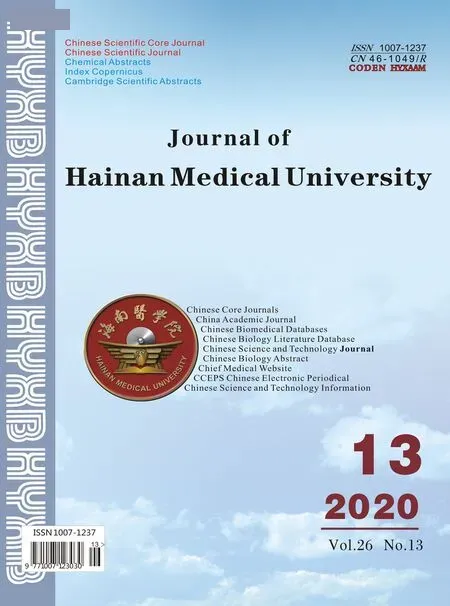 Journal of Hainan Medical College2020年13期
Journal of Hainan Medical College2020年13期
- Journal of Hainan Medical College的其它文章
- Effects of lumbar sagittal balance remodeling on natural absorption after lumbar disc herniation
- Characteristic changes of intestinal flora and its correlation with clinical indexes in patients with Behcet's disease based on TCM syndromes
- The analysis of acupoint selection rules for acupuncture treating functional constipation
- Meta analysis of clinical efficacy of combination of traditional Chinese and western medicine in the treatment of venous ulcer of lower extremities
- Effect of high flux hemodialysis on renal anemia and soluble transferrin receptor in hemodialysis patients
- The correlation between different ABO blood group gene loci and the pathogenesis and prognosis of acute myocardial infarction
